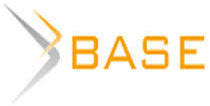Education technology as a way to form an individual creative style of activity for students of architecture and urban planning at university
The demand for updating the content of higher architectural and urban planning education is explained by the change of the educational paradigm to a personality-developing paradigm. Based on the results of the analysis of professional and educational standards, activities, goals and objectives of the Russian Academy of Architecture and Construction Sciences, as well as the results of a survey – interviewing representatives of the professional architectural and urban planning community – the authors of the article conclude that it is necessary to form an individual creative style of activity for students of architecture and urban planning in the process of obtaining higher professional education. The article also presents the results of an experiment showing the need to change approaches to the transfer of academic material relating to the artistic disciplines, to fill the contents of education with methods contributing to the formation of steady interest to creative activity, aspiration to independent research of professionally significant knowledge and skills, striving for the realization of creative activities on their own program. As a means of implementing the pedagogical goals of effective training of qualified personnel with formed individual creative professionally significant qualities, it is proposed to consider a professionally oriented technology of the educational process that contributes to the formation of an individual creative style of activity among students of architecture and urban planning. The main stages and sequence of actions that reflect the educational process are considered in this work. General and proprietary goals are highlighted. It is shown that the goals set when designing the technology of the educational process are fully correlated with the professional competencies established by the educational program for the disciplines under consideration. The features of the selection of content, as well as the choice of methods and forms of organization of cognitive and creative activity of students are considered. The following methods are preferred: the case study method, the modeling method, the use of various methods for developing creative potential and setting up creative activities. The developed block of criteria and evaluation is presented, which reflects the main criteria and indicators, as well as the levels of formation of individual creative style of activity among students. The included observation, conversation method, interview, rating method, and pedagogical consultation method are defined as the main empirical methods of diagnostic control. It is concluded that the proposed training technology will contribute to the successful formation of an individual creative style of activity of students of architects and urban planners at the University.

















While nobody left any comments to this publication.
You can be first.
8 (2A), 231-237. (In Russian).